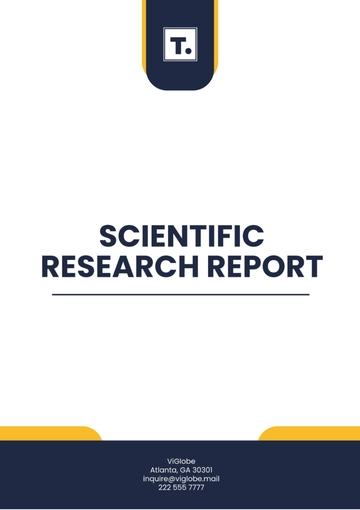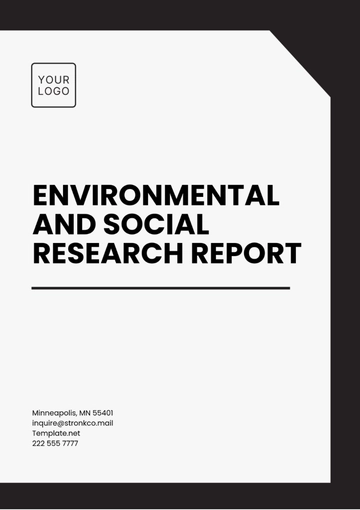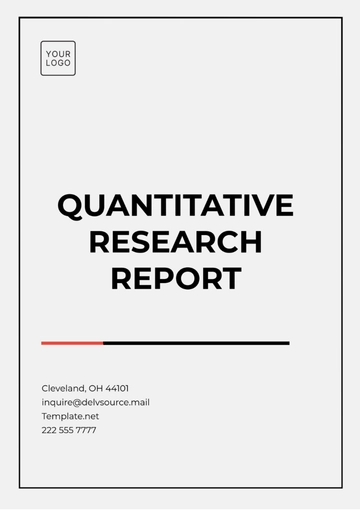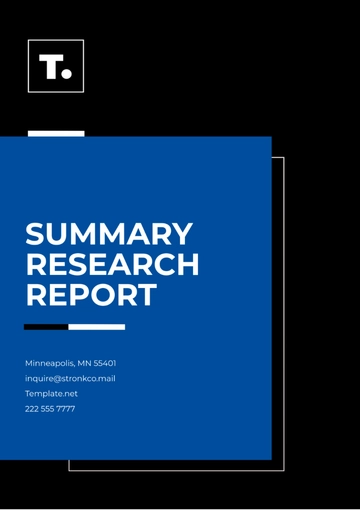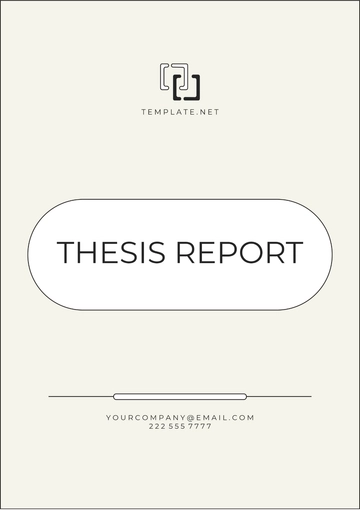Free Scientific Research Report
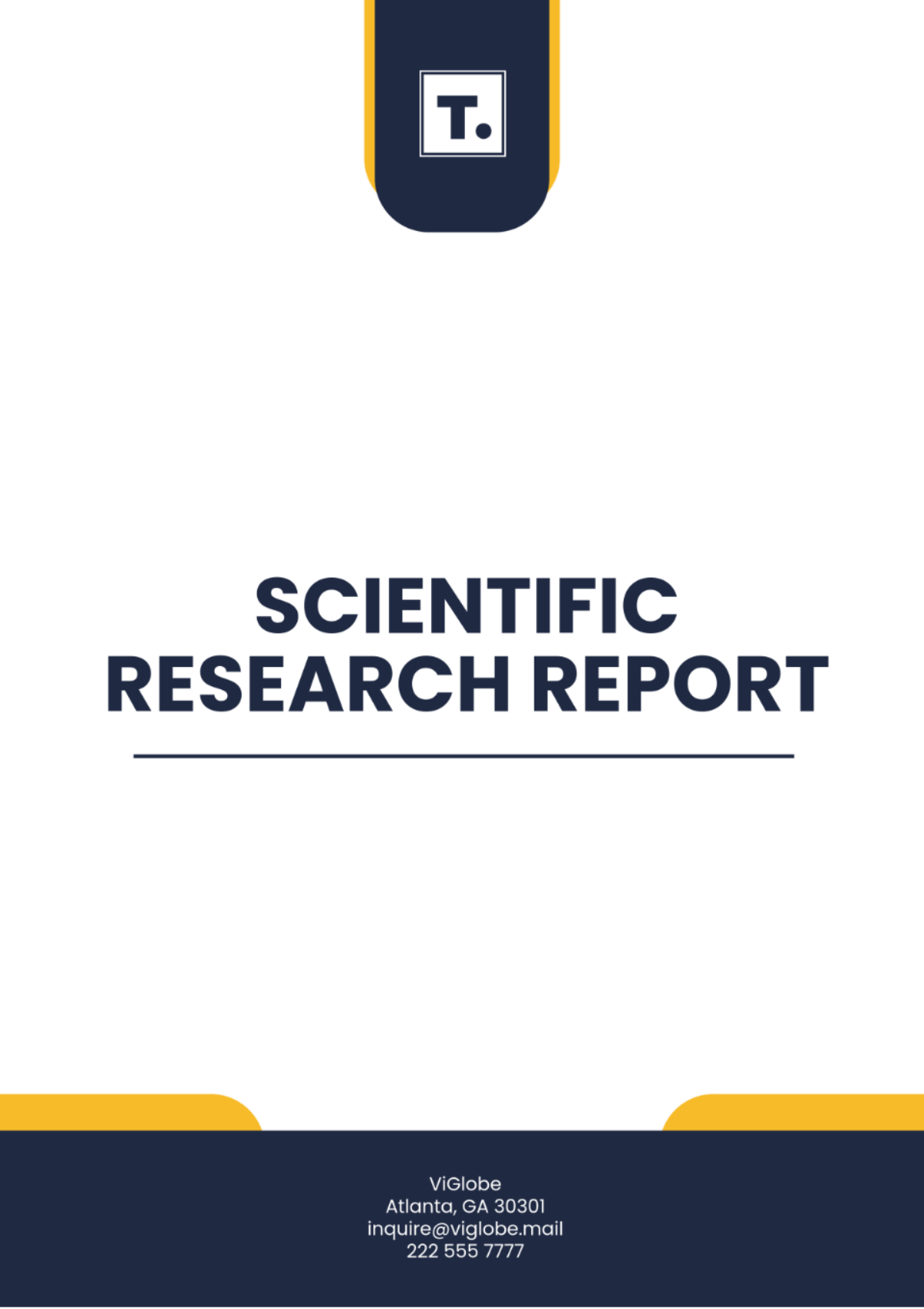
I. Introduction
A. Background
The global energy landscape is undergoing significant transformation, driven by the urgent need to address climate change and resource depletion. Renewable energy sources have emerged as vital alternatives to traditional fossil fuels, offering sustainable and environmentally friendly solutions.

This research conducted by [YOUR NAME] at [YOUR COMPANY NAME] explores the latest innovations in sustainable energy and their potential impacts on the environment and society.
B. Research Objectives
This study aims to assess the efficacy of emerging renewable energy technologies and their scalability. Key objectives include evaluating the technological advancements, cost-effectiveness, and potential barriers to widespread adoption.
The ultimate goal is to provide a comprehensive analysis that can guide policymakers, industry leaders, and researchers in making informed decisions about energy investments and policies.
II. Methodology
A. Research Design
The research employs a mixed-methods approach, combining quantitative data analysis with qualitative case studies to provide a multi-faceted view of the subject. Data were collected from a range of sources, including academic journals, industry reports, and expert interviews.
B. Data Collection
Data collection was conducted across several phases to ensure robustness and accuracy. Sources include:
Government energy databases
Interviews with industry experts
Peer-reviewed scientific articles
Reports from global energy forums
Surveys of consumers and businesses using renewable technologies
III. Results
A. Advancements in Technology
The study identified significant technological advancements, particularly in solar photovoltaics and wind turbines. Increased efficiency and reduced production costs have enhanced the adoption rates of these technologies globally.
B. Analysis and Discussion
Technology | Cost Reduction (%) | Efficiency Increase (%) | Adoption Rate |
|---|---|---|---|
Solar PV | 75 | 40 | High |
Wind Turbines | 60 | 35 | Moderate |
Hydroelectric | 50 | 25 | Low |
Bioenergy | 65 | 30 | Low |
Geothermal | 80 | 45 | Moderate |
IV. Conclusions
A. Key Findings
The research highlights the promising potential of renewable technologies in addressing climate challenges. Solar PV and wind technologies, due to their high efficiency and adoption rates, are particularly impactful.
B. Recommendations
It is recommended that stakeholders at all levels increase investments in renewable technologies, particularly in regions with high solar and wind potential. Additionally, policy enhancements are needed to support the integration of these technologies into existing energy grids.
V. References
Global Energy Statistical Yearbook 2050. Online resource accessed.
Smith, J. (2051). Renewable Energy Technologies and Market Trends. Renewable Energy Journal.
Jones, A. & Brown, D. (2052). The Impact of Cost Reductions in Photovoltaic Technology. Energy Economics.
Renewable Energy Policy Network. (2053). Global Policy Review.
Global Wind Energy Council (2054). Annual Report.
For further information on this research and its findings, please contact [YOUR NAME] via:
Email: [YOUR COMPANY EMAIL]
Phone: [YOUR COMPANY NUMBER]
- 100% Customizable, free editor
- Access 1 Million+ Templates, photo’s & graphics
- Download or share as a template
- Click and replace photos, graphics, text, backgrounds
- Resize, crop, AI write & more
- Access advanced editor
Maximize your scientific endeavors with the Scientific Research Report Template by Template.net. Fully customizable, it tailors to your specific research requirements. Download and print swiftly for immediate use, ensuring thorough documentation. Edit seamlessly in our AI Editor Tool, refining your report effortlessly. Elevate your research process today with this template, offering unparalleled efficiency and precision.
You may also like
- Sales Report
- Daily Report
- Project Report
- Business Report
- Weekly Report
- Incident Report
- Annual Report
- Report Layout
- Report Design
- Progress Report
- Marketing Report
- Company Report
- Monthly Report
- Audit Report
- Status Report
- School Report
- Reports Hr
- Management Report
- Project Status Report
- Handover Report
- Health And Safety Report
- Restaurant Report
- Construction Report
- Research Report
- Evaluation Report
- Investigation Report
- Employee Report
- Advertising Report
- Weekly Status Report
- Project Management Report
- Finance Report
- Service Report
- Technical Report
- Meeting Report
- Quarterly Report
- Inspection Report
- Medical Report
- Test Report
- Summary Report
- Inventory Report
- Valuation Report
- Operations Report
- Payroll Report
- Training Report
- Job Report
- Case Report
- Performance Report
- Board Report
- Internal Audit Report
- Student Report
- Monthly Management Report
- Small Business Report
- Accident Report
- Call Center Report
- Activity Report
- IT and Software Report
- Internship Report
- Visit Report
- Product Report
- Book Report
- Property Report
- Recruitment Report
- University Report
- Event Report
- SEO Report
- Conference Report
- Narrative Report
- Nursing Home Report
- Preschool Report
- Call Report
- Customer Report
- Employee Incident Report
- Accomplishment Report
- Social Media Report
- Work From Home Report
- Security Report
- Damage Report
- Quality Report
- Internal Report
- Nurse Report
- Real Estate Report
- Hotel Report
- Equipment Report
- Credit Report
- Field Report
- Non Profit Report
- Maintenance Report
- News Report
- Survey Report
- Executive Report
- Law Firm Report
- Advertising Agency Report
- Interior Design Report
- Travel Agency Report
- Stock Report
- Salon Report
- Bug Report
- Workplace Report
- Action Report
- Investor Report
- Cleaning Services Report
- Consulting Report
- Freelancer Report
- Site Visit Report
- Trip Report
- Classroom Observation Report
- Vehicle Report
- Final Report
- Software Report



